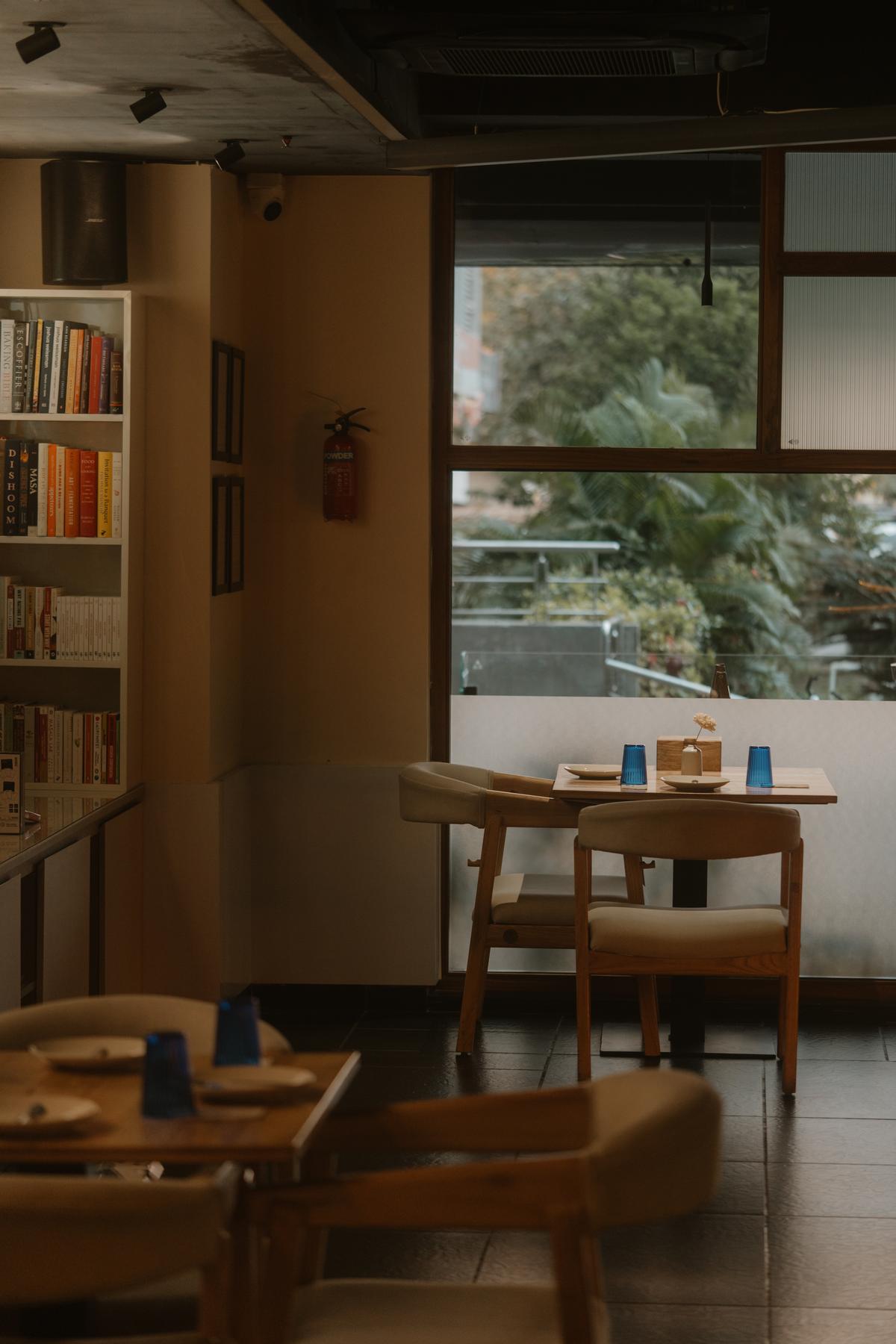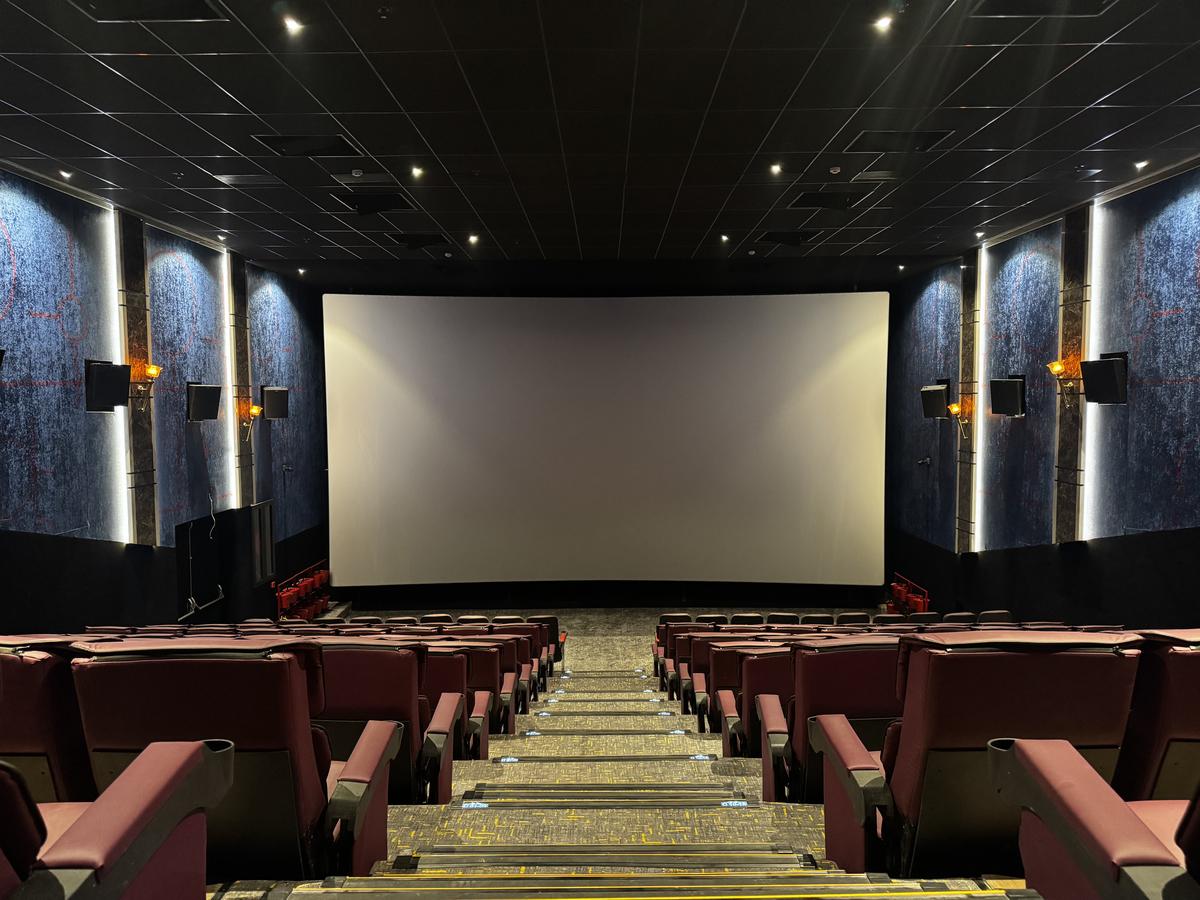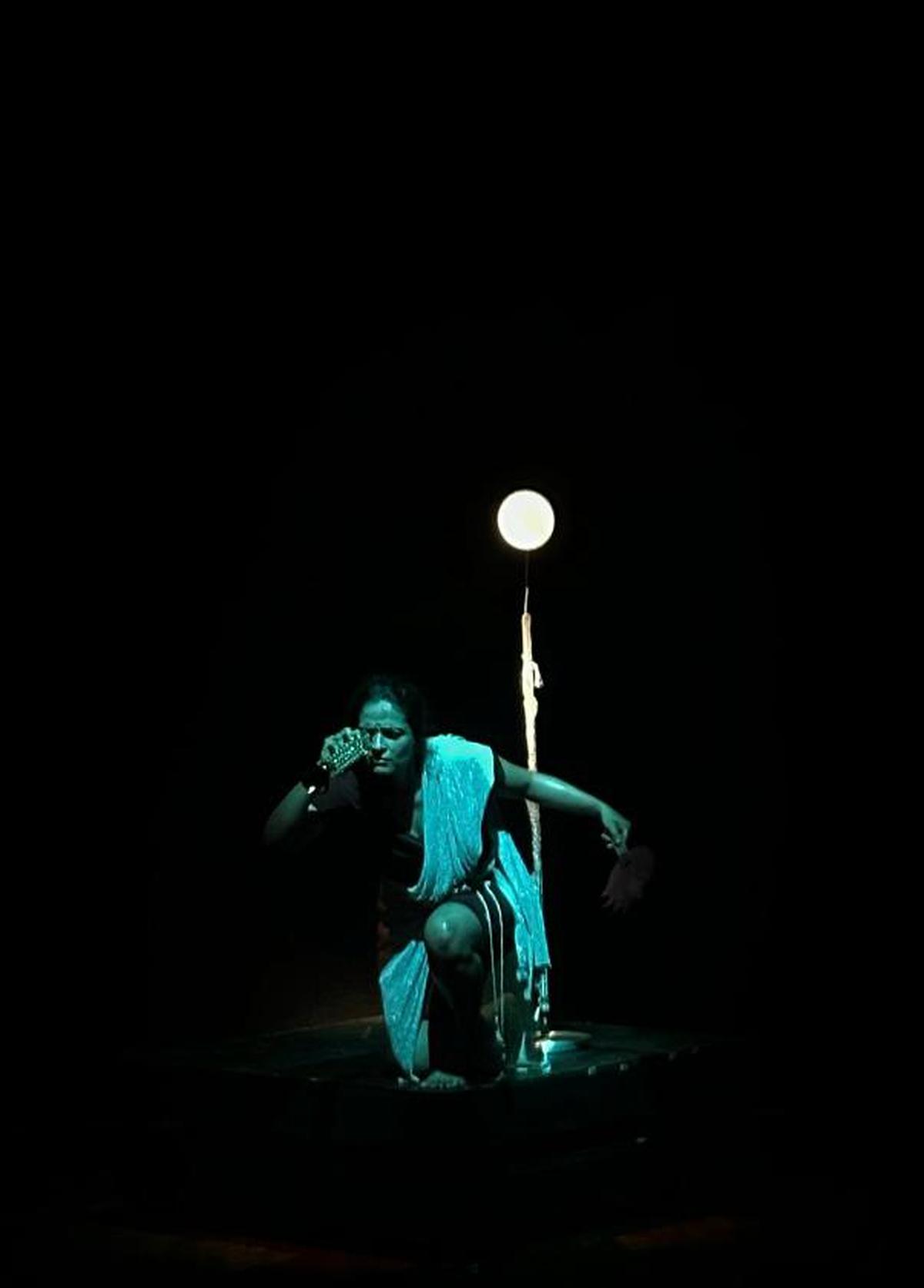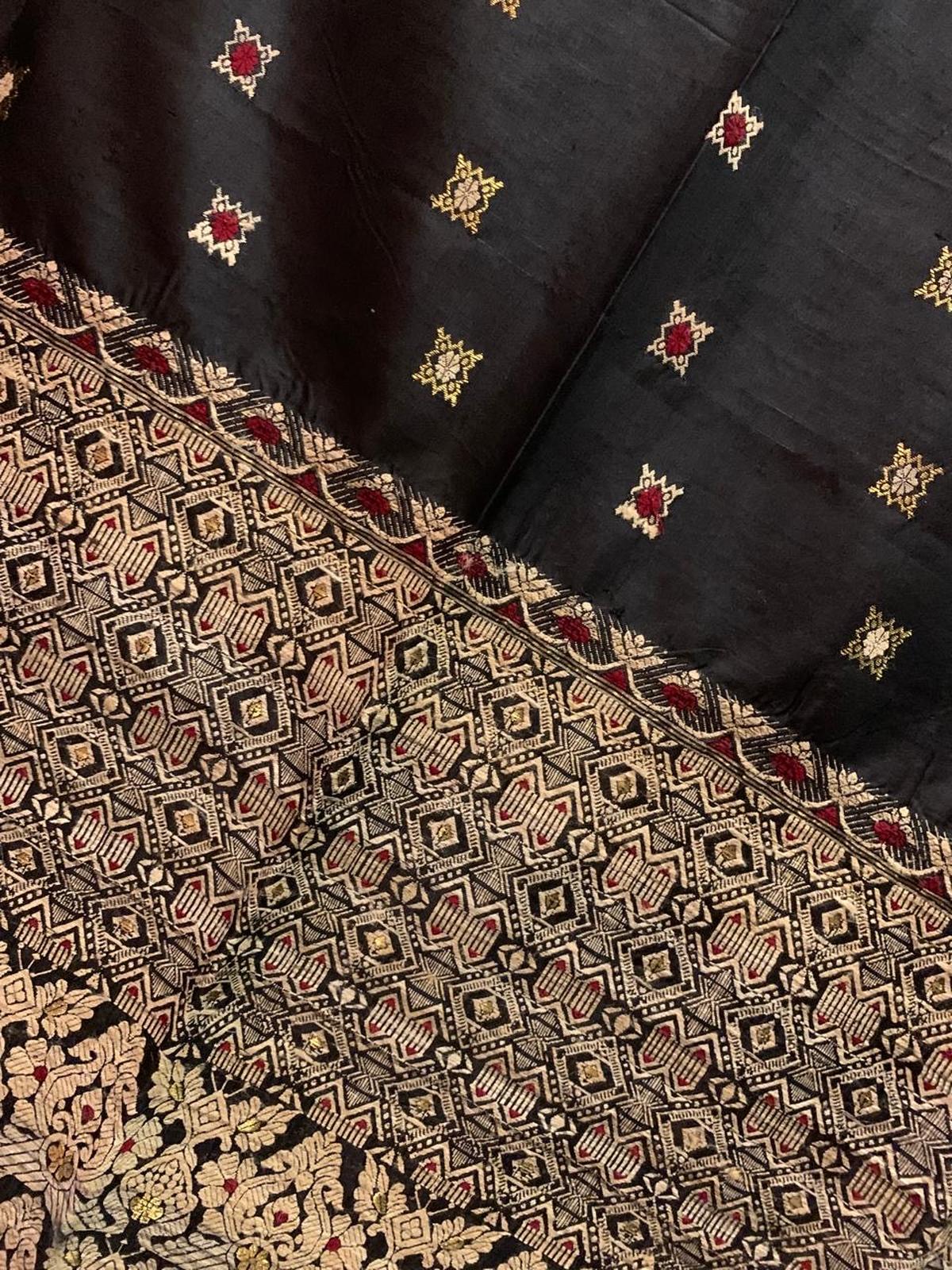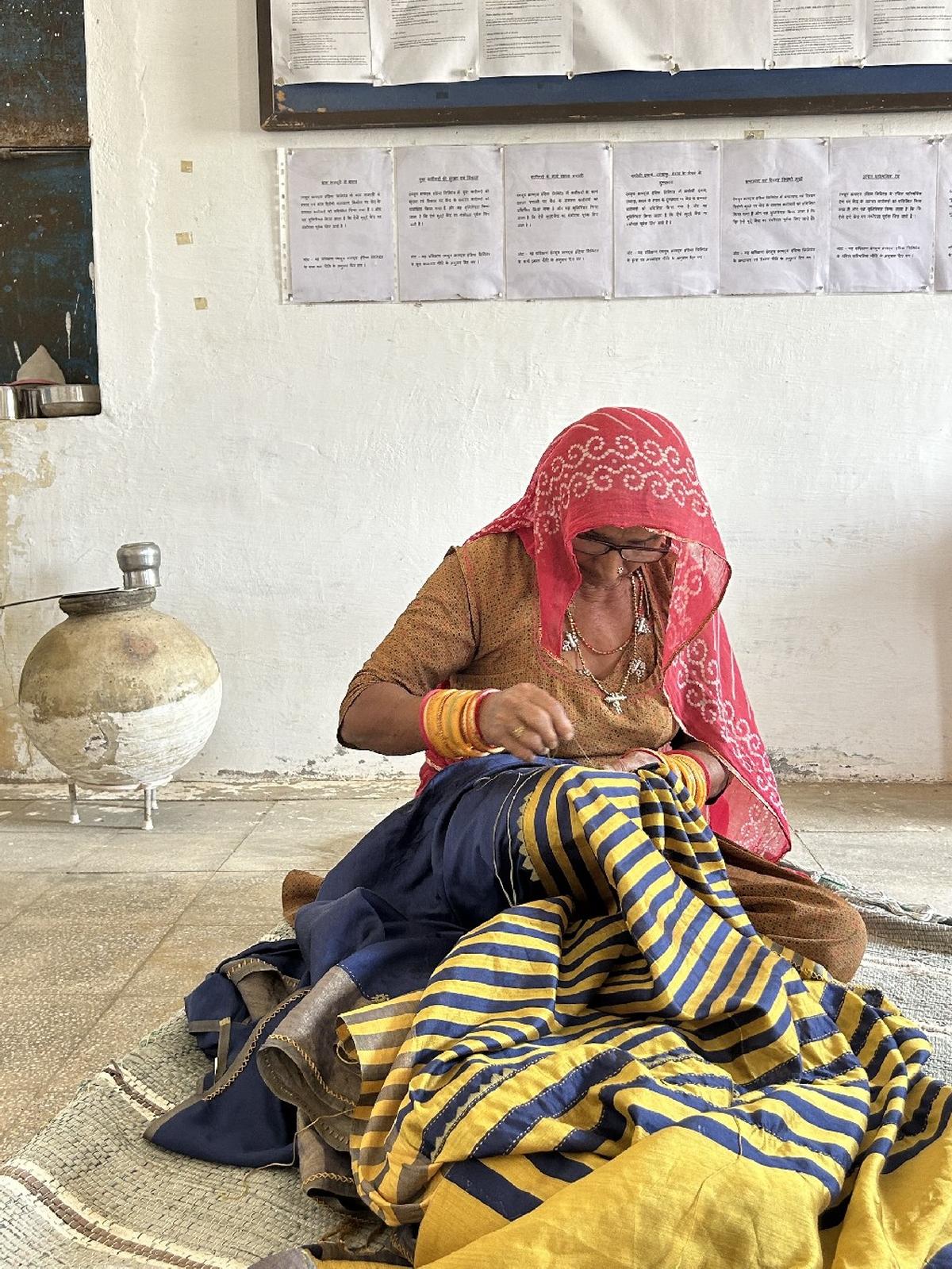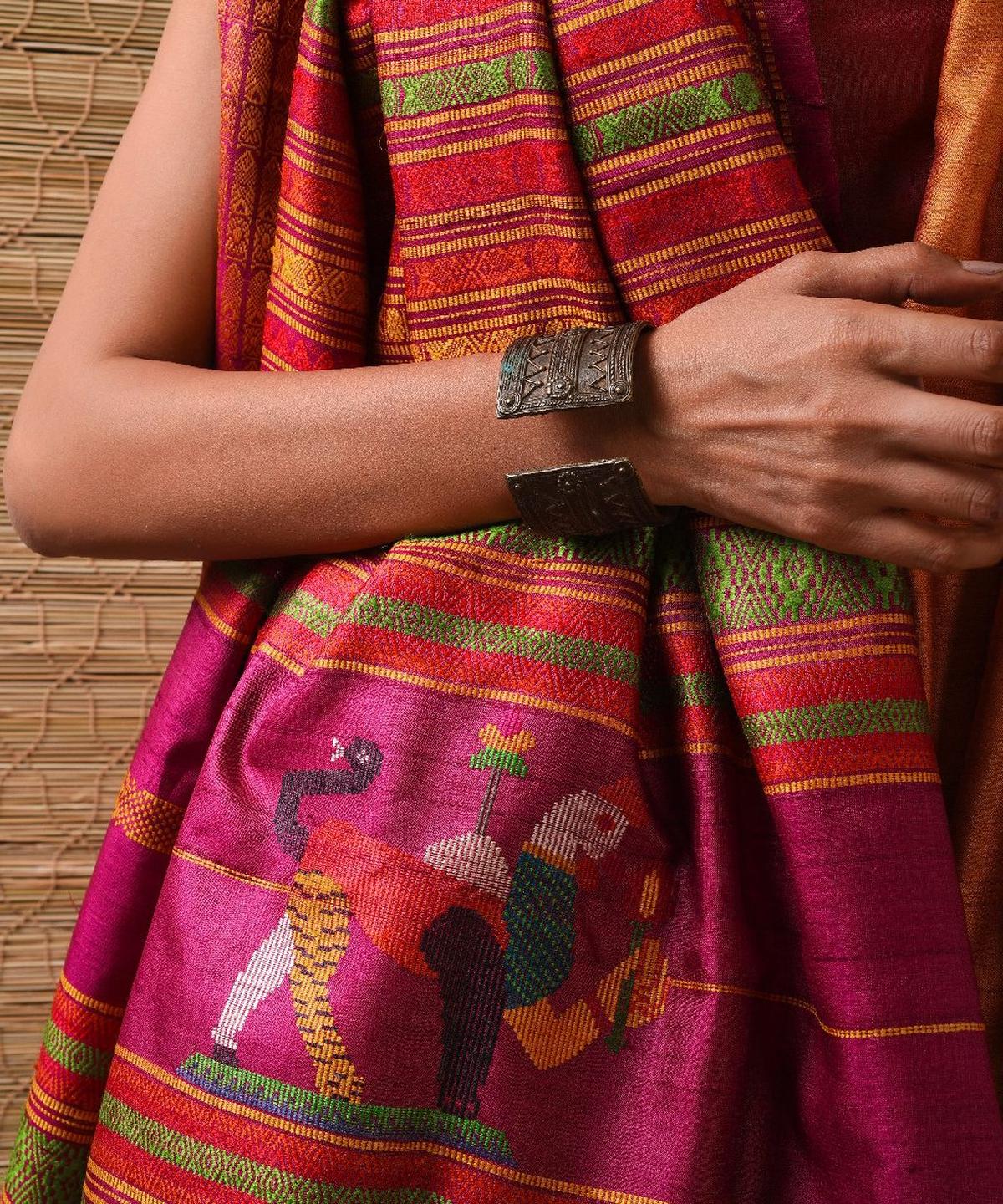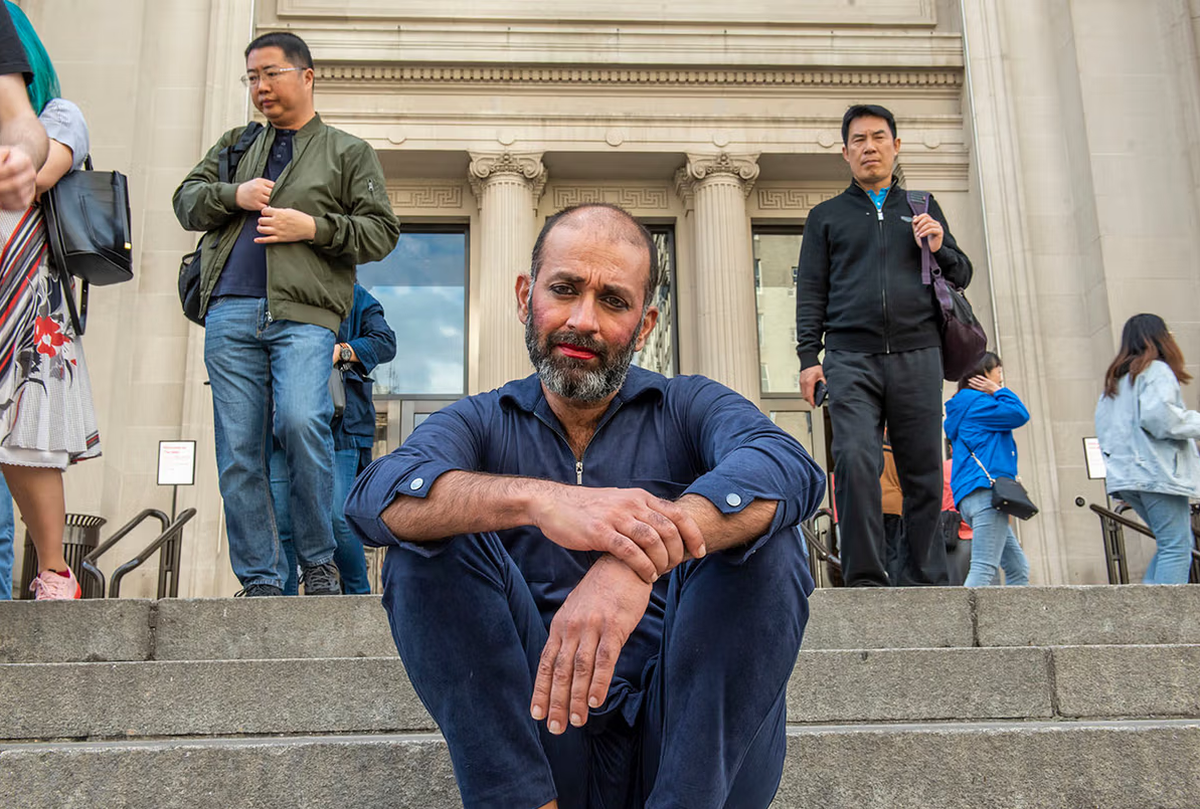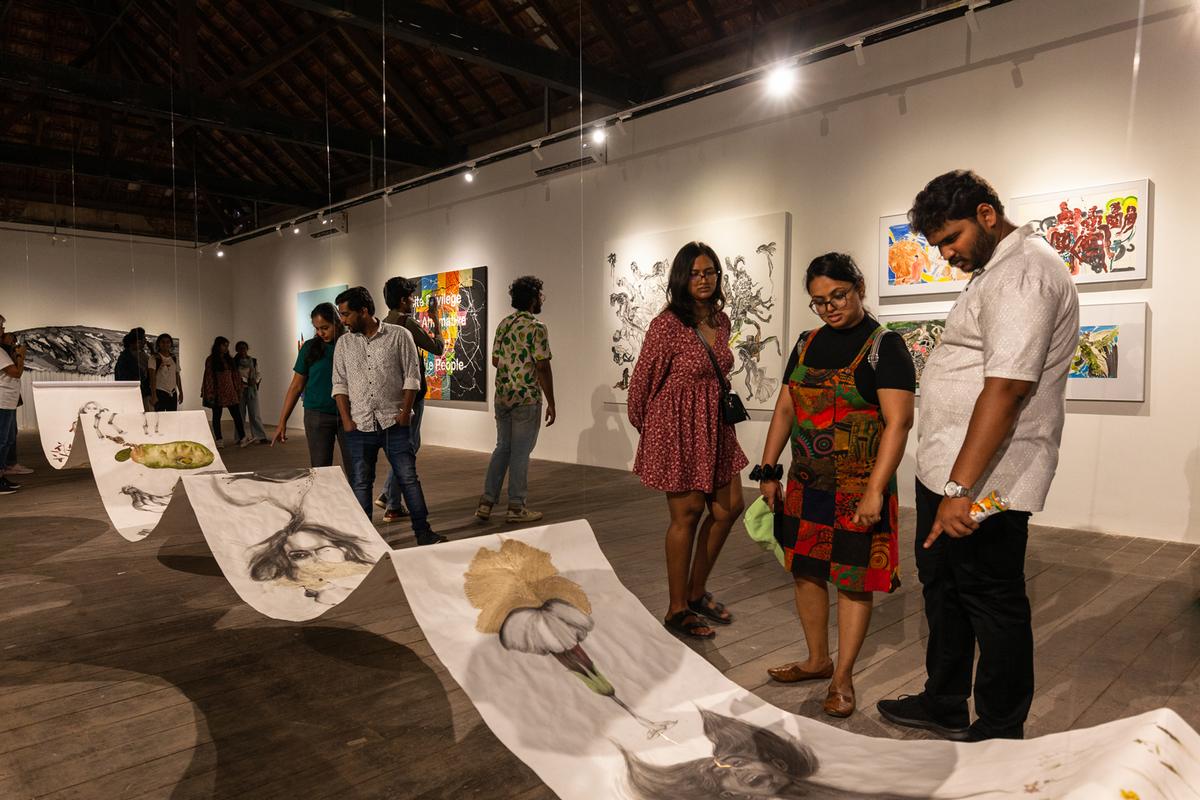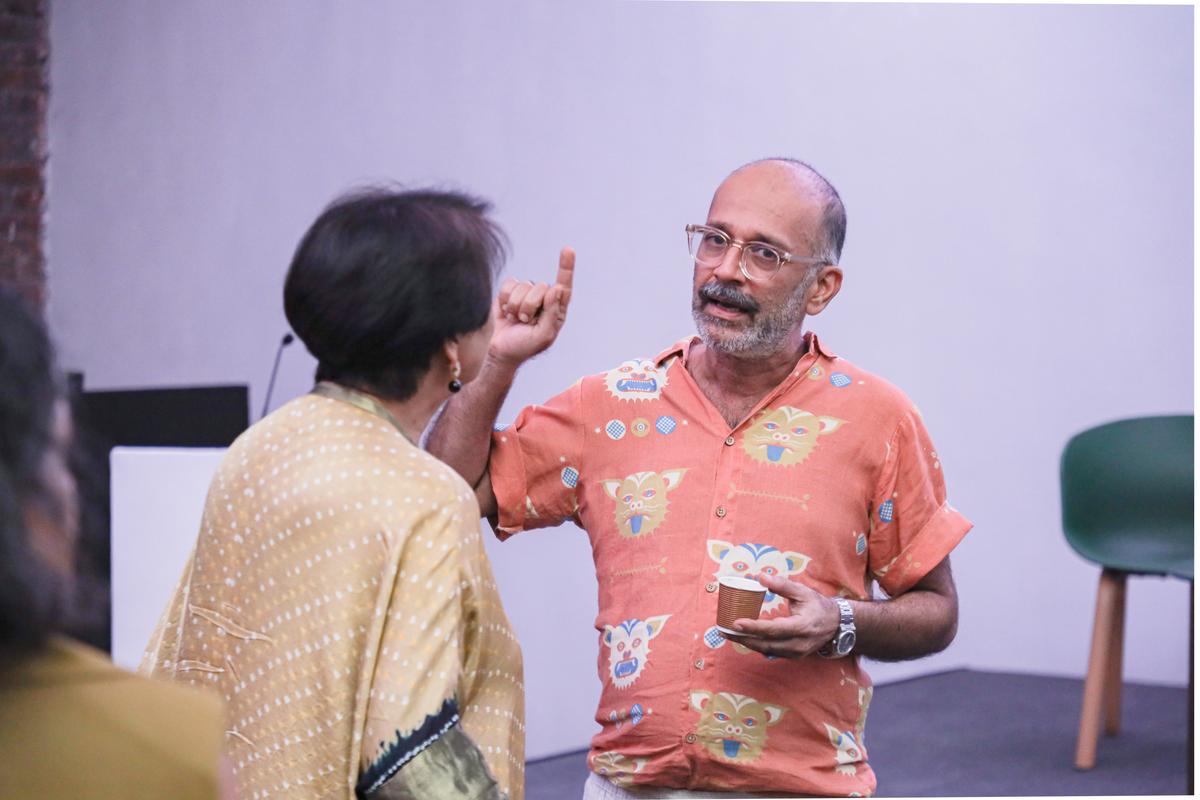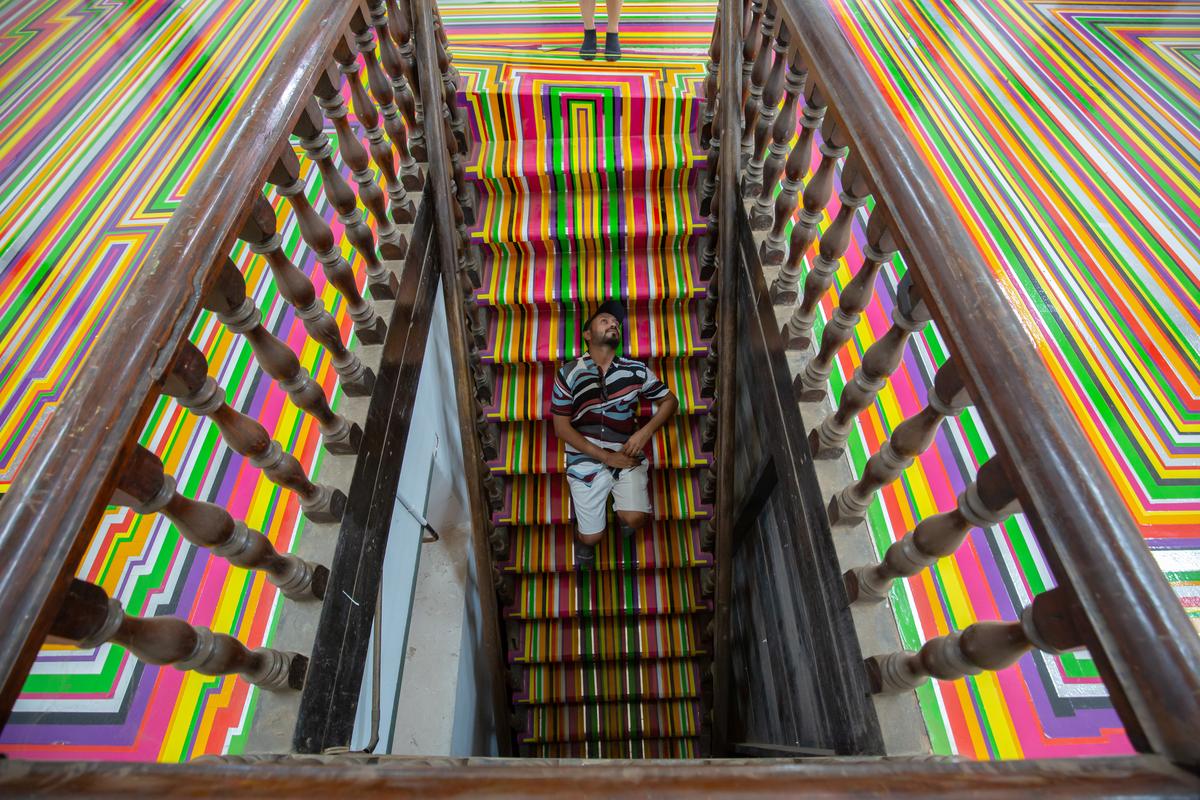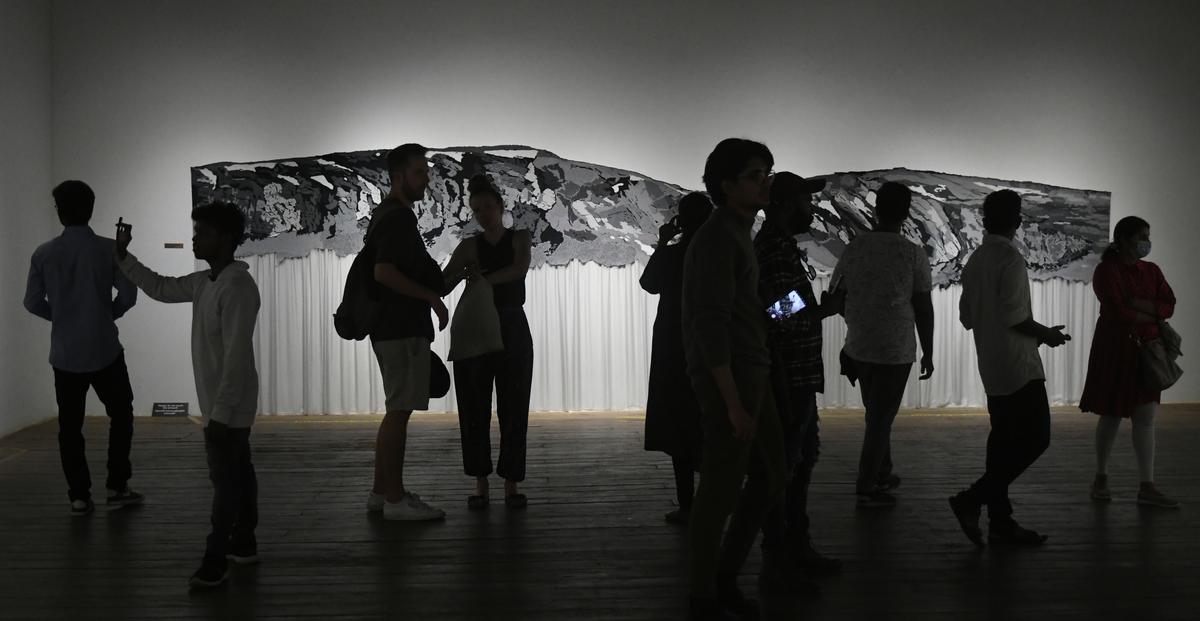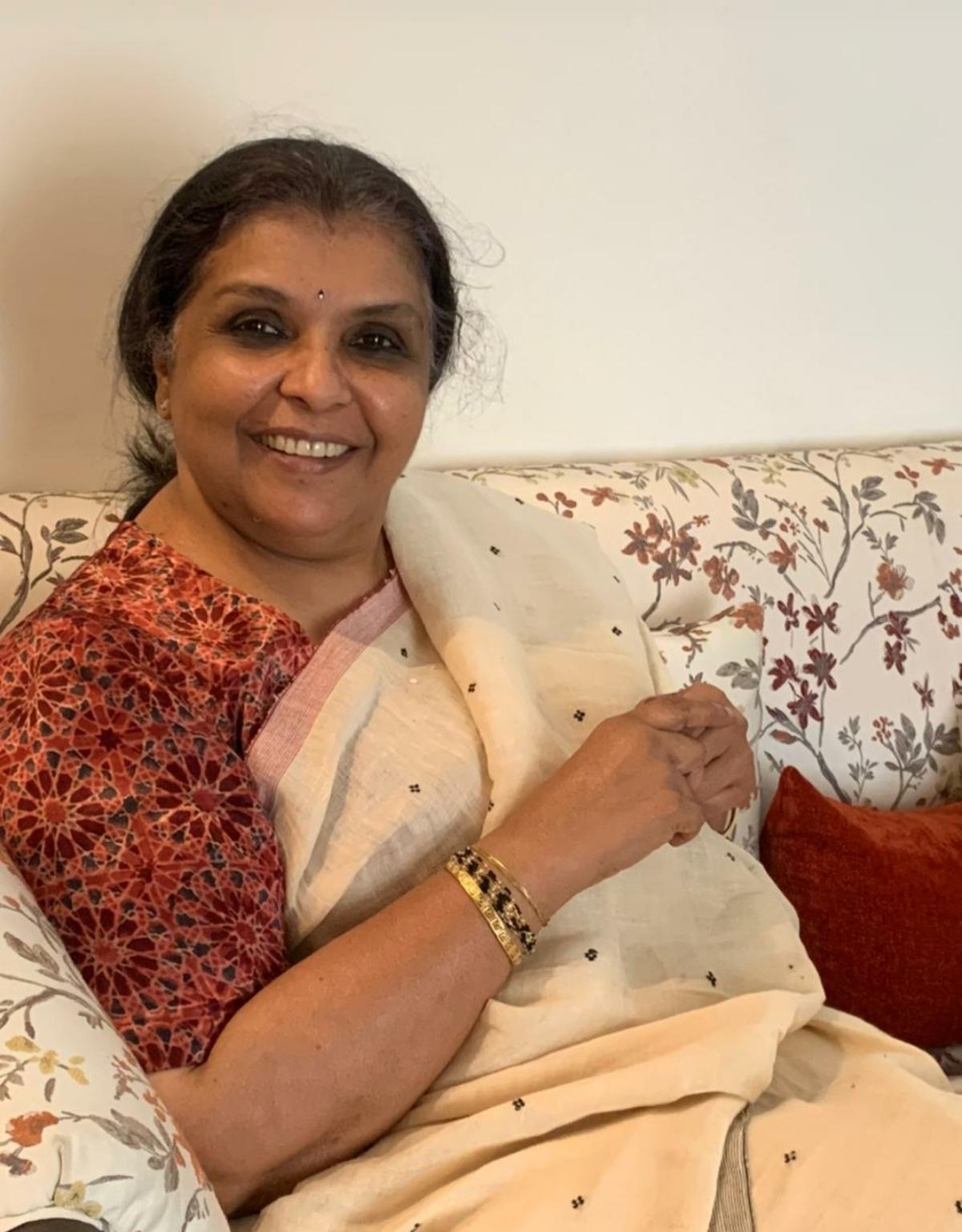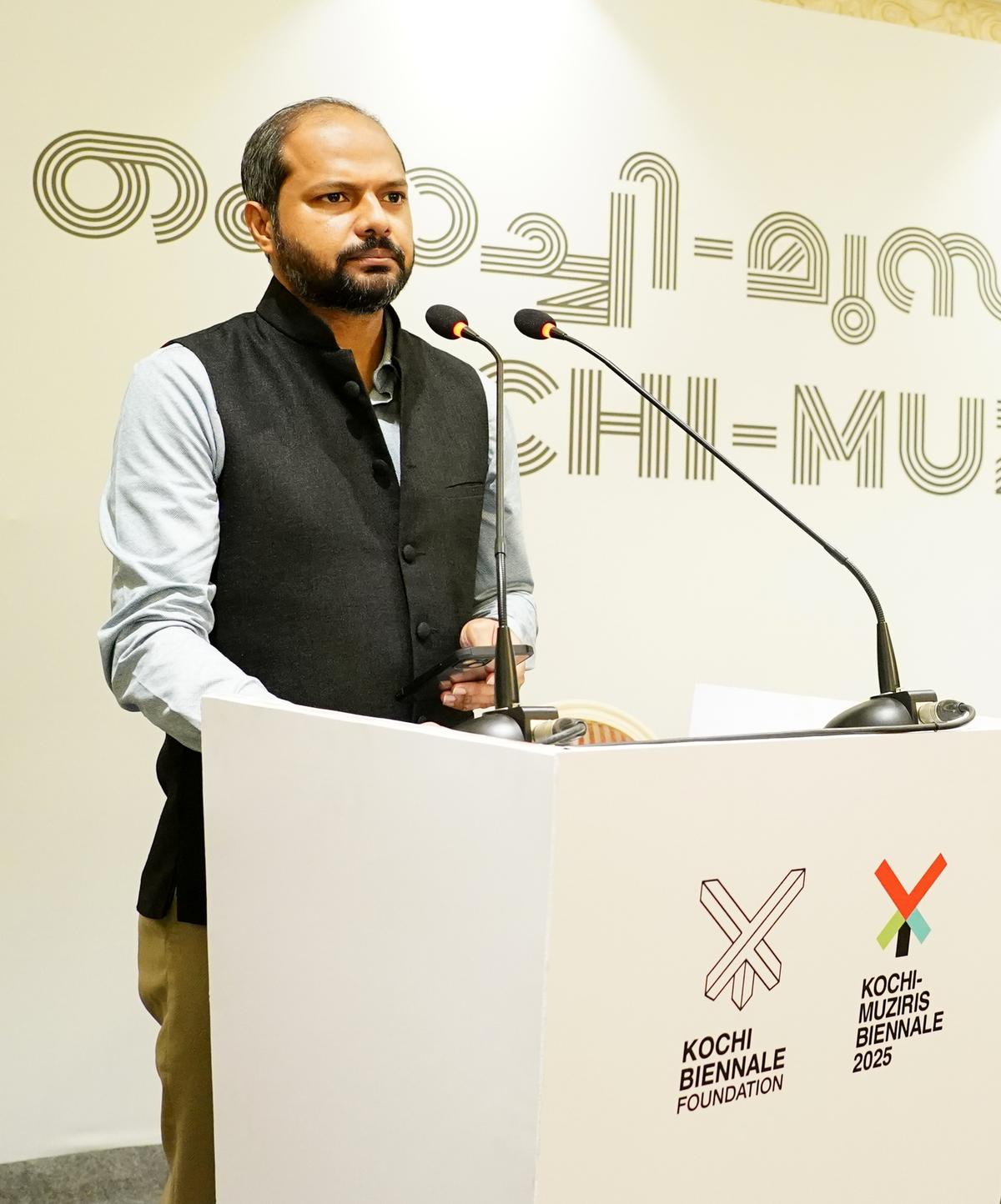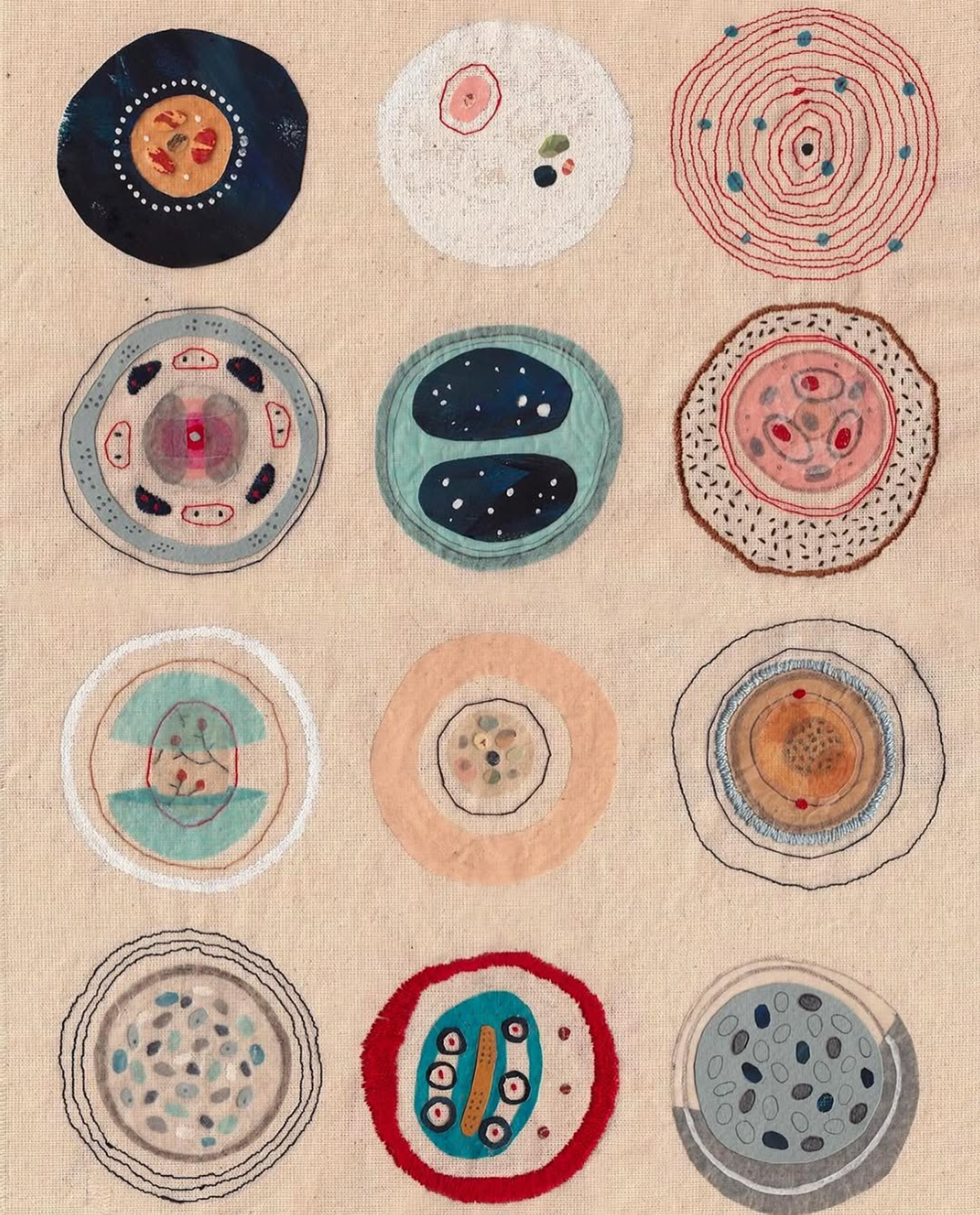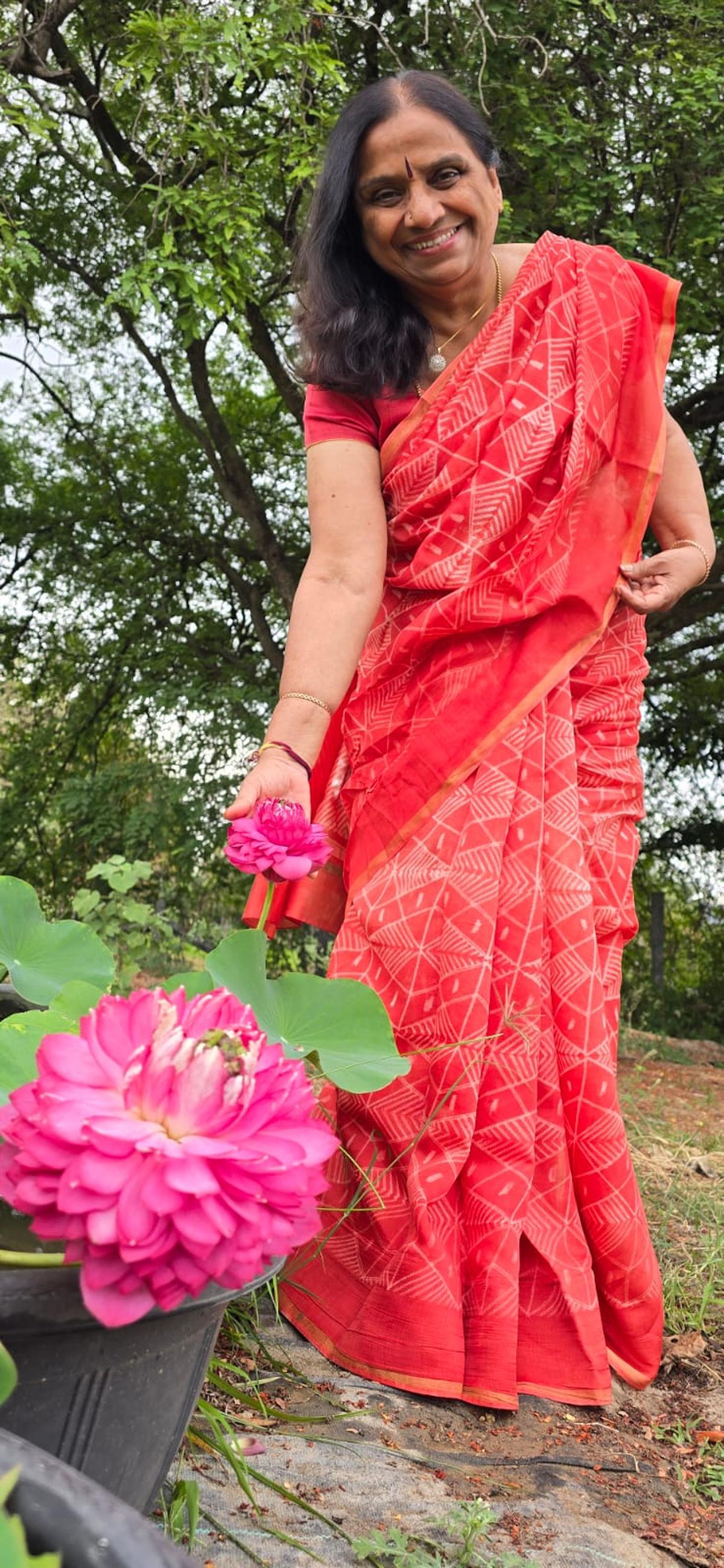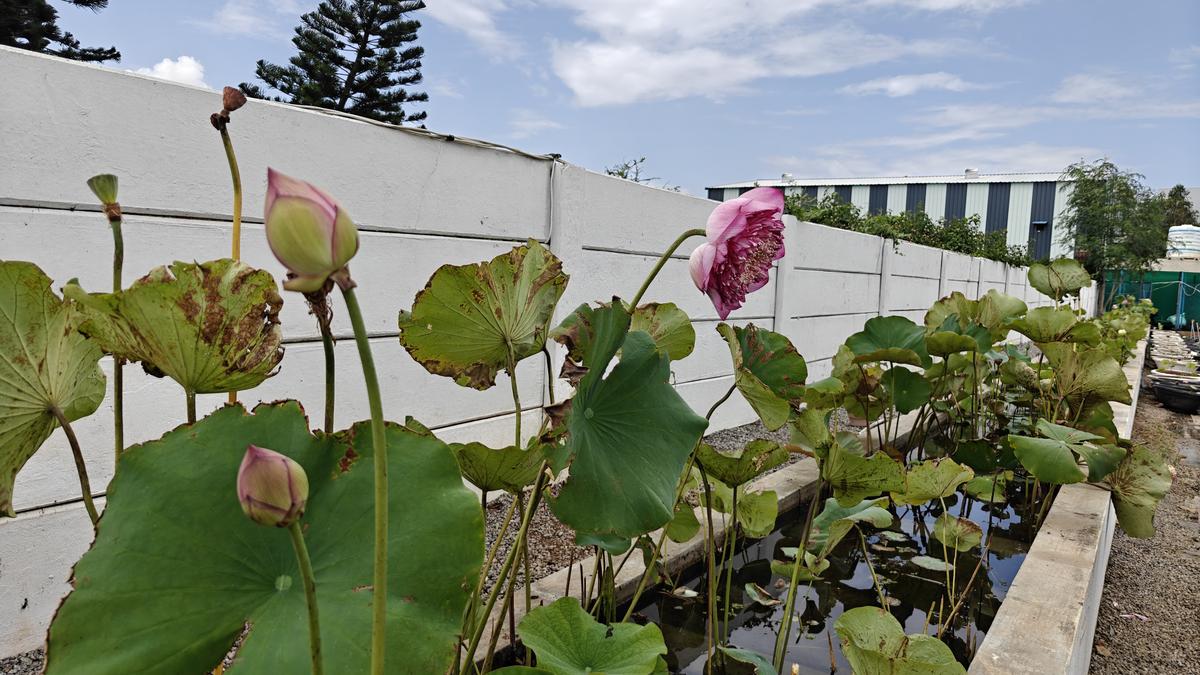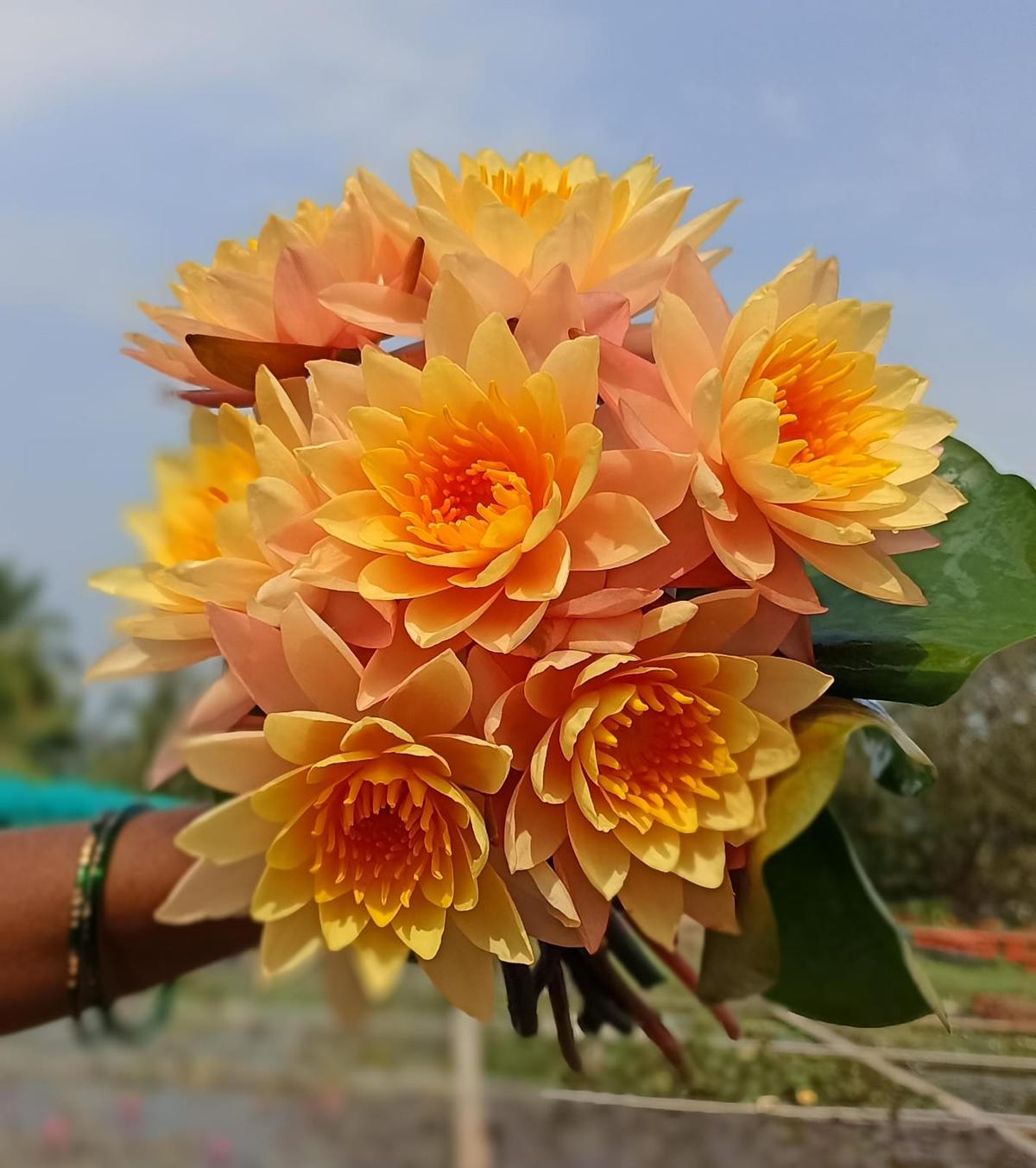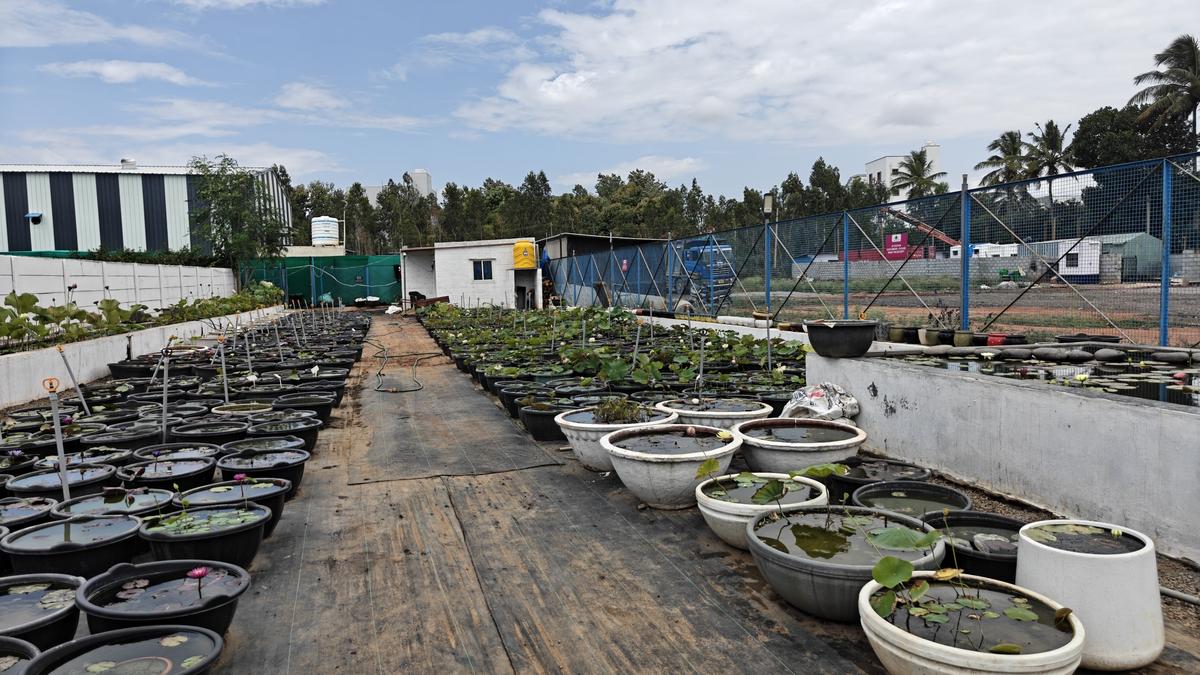For two decades now, artist Nikhil Chopra and his personae have walked the planet, eating, dressing, pondering, undressing, and sleeping like the rest of us. Unlike most of us, their habitats have ranged from basements in Ohio and town squares in Havana, parks in Budapest and the meadows of Kashmir, prestigious museums in New York and Berlin to derelict warehouses in Kochi.
Yog Raj Chitrakar, Michelle, Black Pearl, Sir Raja and about a dozen more: Chopra has slipped in and out of each character that’s been drafted as carefully, mindfully and luxuriously (complete with elaborate costumes and make-up) as the paintings (most often landscapes) that he creates over several hours, if not days, as them. Through his personae — as they seek reconciliation, transformation, even transcendence in the elements that they replicate from memory in charcoal, lipstick, crayon, oils, chocolate, slurry — Chopra has negotiated the fault lines of time, space and identity, reckoning frequently with historic flows of power and channels of inequity. All this, while colouring within the question at the core of all human experience: the making and unmaking of the self.
Artist-curator Nikhil Chopra
Now though, the only drawing he is working on is the one stretched out on the walls of his home studio in Goa. And the only persona that he has the wherewithal to cultivate is that of the curator — of the Kochi-Muziris Biennale (KMB) 2025. “I am certainly thinking about playing curator as a performance, the rigour and endurance that one has to go through,” says Chopra, sitting on the deck of his brand new home in Aldona under a canopy of palm trees glowing a spectral green against a monsoon sky. “I am very much seeing this biennale as a long durational performance piece.”

“Every biennale has had its own tone, its own context, its own incredible successes and also its failures. But everything in its nascency goes through difficulties. The biennale has done a lot of self-reflection to understand where its shortfalls were. And one of them was management — of not just people, but also of funds — because of wanting to put Kochi and India on the international art map. What Bose and Riyas did back in 2012 was take a giant leap. It was a debate and it was urgent, and it still feels urgent. The success of the biennale is in spite of its failures, and we’ll continue to do that.”Nikhil ChopraCurator, KMB 2025-2026
Lull by Anju Acharya (2022)
Of rigour and friendship economies
It is a few months since Chopra’s last performance, From Land to Fire, at the Glynn Vivian art gallery in Swansea — eight hours of dwelling in and on the Copperopolis, the historical nickname for the Welsh city and a powerhouse of the Industrial Age. Weeks after that, he sat on stage at a Mumbai studio as the Asia Society’s Trailblazer for 2025, in conversation with contemporary artist Jitish Kallat, discussing his particular approach to artmaking, while feeling acutely a sense of homecoming, and the enormity of this year, which is his 50th.
“I looked around and saw so many familiar faces, and felt this overwhelming sense of gratitude and validation and recognition,” he enthuses, remembering his days in Mumbai in the early years of the millennium, a city he left around 2012 due to the rising cost of living and declining space to create, for Goa, where he was drawn to an easy pace and non-competitive nature of life. “This obviously drove the point home, that nothing can or should be done on your own.”
Nikhil Chopra at Asia Society’s Trailblazer
That conviction in community has defined more of Chopra’s practice than is immediately obvious — especially since his return from a transformational residency at the Freie Universität, Berlin in 2012. Behind the scenes of the performer-painter striking out solo has been a cavalry of lifelong collaborators, including costume designer Louis Braganza, and photographers Madhavi Gore and Shivani Gupta. Gore and Gupta have also been elemental to the creation and continuing operation of HH Art Spaces, the Goa-based artist-run movement that Chopra started in 2014, alongside French artist Romain Loustau — and which is on the banner as curator for this edition of the Kochi- Muziris Biennale.
“At HH Art Spaces, we’ve been looking at artists that are engaged in process,” says Chopra. “We do residencies, we run studio spaces — we are really engaged in their way of manifesting their ideas into not just stuff, but into experiences.” It’s why, says Chopra, one of the most important aspects of what they’re looking at [for the KMB] is the presence of the artist in their own work. “We’ve really leaned upon this idea of labouring over one’s craft, a practitioner’s relationship to rigour with material.”
A stairwell with Scottish artist Jim Lambie’s artwork Zobop (2022)
| Photo Credit:
Getty Images

“Nikhil’s interrogation of colonial and local, public and private, mask and wearer, is what makes him a trailblazer in contemporary South Asian art. His profound belief in communities is embodied in his practice too, and I can’t wait to see his curatorial vision come to life at the upcoming Kochi-Muziris Biennale — which is an essential part of not just the global art calendar but public life. It [KMB] is a microcosm of cross-cultural dialogue; it integrates art and public spaces in a way that invites everyone to explore art freely and unselfconsciously. It lives up to it’s reputation as the people’s biennale.”Inakshi SobtiCEO, Asia Society India Centre
Chopra and team have also enshrined collaboration in their approach — through what he calls “friendship economies” in the curatorial note for this edition, coming together under the theme For the Time Being. “We do not create in isolation,” he explains. “We create together. And when we create together, an artist’s practice, in a sense, creates an ecosystem around that practice.”
He’s also thinking about the sustainability of a community, “of quite literally putting food on the table,” he adds, bringing up another word from his curatorial note: “scaffolding”. “Because at the end of the day we recognise that what we do is artistic and promotional, but it’s also professional, and there are various economies that are connected to it. We are going to work with this feeling of love, trust, solidarity, camaraderie, coexistence in our shared politics, for where we think the world should be — as the engine and as the fuel.”
What to expect in Kochi
A dynamic biennale: “We wanted to deflect this idea of the finished biennale,” says Chopra. “I don’t necessarily feel the need for it to be this static museum experience. It has to be a shape-shifting, metamorphic experience that people can have.”
Keeping the conditions of Kochi in mind: “We don’t want to fight against them, because the harder you fight those conditions, the more they trouble. So we’ve invited people who know how to work in those conditions — high humidity, derelict spaces, there may be a leaking roof somewhere.
The body of Kerala: “We’re thinking about Kerala not just as a place, but as a place with physicality, with features, driven by the elements earth, wind, fire, water. How do we situate our practices in this incredibly dense place, not just ecologically and physically, but also historically, in the imagination of people? This is a culture that’s still alive with traditions that were alive 5,000 years ago. We’re trying to be as aware of that context as possible.”
Artist Anne Samat’s installation Cannot Be Broken and Won’t Live Unspoken (2022)
| Photo Credit:
Thulasi Kakkat
A smaller biennale?: “We’ve made some things smaller — the number of artworks that require shipping in from abroad, works overly reliant on technology, works that are too delicate and need a lot of air conditioning. But the number of venues has grown, there are new sites and spaces,” Chopra says. “While the number of invitations that have gone out is only about 70, the number of collaborative practices within those is increasing. A lot of artists are occupying a larger footprint in these spaces. So if anything, it’s bigger.”
The world is invited: “I hesitate to use the word Global South because I find it extremely problematic but we’ve invited artists from countries on the other side of the economic hemisphere. Of course, South Asia is important to us, but so is Southeast Asia, South America and the African continent. Even from the United States, we’ve looked at voices that are on the margins. And then from India, we’ve invited a lot of very young, new, fresh, unseen talent. They know these conditions because it’s home ground and a young artist has a lot of tenacity. So we’ve invited them out of their little studios in Baroda, Ahmedabad, Shantiniketan, Assam, Kolkata, Patiala.”
Visitors at the last edition of the on Kochi-Muziris Biennale
| Photo Credit:
Thulasi Kakkat
Art as soft power
Where the world is, is of course a different question. On the one hand is the perceived threat of AI on the art world — like everything else. But, to Chopra, an artist sending in a grammatically correct proposal is not the same as an artist letting technology do the heavy lifting. “We talked about that when the Internet came around, when large servers were running these machines for us. We’ve questioned our relationship to technology from an ethical place. But at the end of the day, we are crippled today without the Internet. So I don’t have an ethical issue with technology.”
On the other hand is art’s growing position as soft power around the globe — the UAE’s emerging scene is a most visible example of art’s place in geopolitics. “It’s definitely exploding,” muses Chopra, “but I think it’s also laundering people’s consciences. I feel like we do the washing of people’s souls. Even with the developments happening in Delhi, Mumbai, Singapore, it really does feel like we are placing contemporary art as a very valuable part of contemporary culture, just as much as music, cinema and various other forms of expression.”
Story behind the white
Over the years, KMB has had its share of creative collabs. Like ‘Kochi Biennale White’, a custom gallery white developed by Asian Paints along with artists Riyas Komu, Bose Krishnamachari, and Sudarshan Shetty. The versatile colour had no undertones and was used, and still is, across the Biennale’s exhibition spaces to provide a neutral yet deep backdrop for the artworks.
The Indian art world, specifically, appears to be in a boisterous phase, fuelled by an elastic calendar of fairs and festivals and projections about appetites that seem to go in only one direction: up. But Chopra’s been here before, given that his own coming of age coincided with Indian contemporary art’s last big boom in 2007-08. “We occupied large museum spaces, like the Centre de Pompidou in Paris, Serpentine in London, the Mori Museum in Tokyo,” he remembers. “A lot of us would be talking to each other about how the scene in India is only going to change if India becomes an exciting venue for international art, and a site for an international artist to come and create an exhibit. I think Riyas [Komu] and Bose [Krishnamachari] felt that in Kerala, and I felt that here in Goa.”

“When you compare the Kochi Biennale to international ones, it falls short because they don’t have the funding to bring down many international artists. More international names make an international biennale. While including tech and new media is the prerogative of the curator, we can’t ignore the big new trends. It’s important to pick the mood now, which is either activism/politics or new tech. We go to different ends of the world to see it, so why can’t we have it here? Why should we not let our artists and audiences, who don’t know where to go [to see these works], see it right here.”Sharan ApparaoFounder-owner, Apparao Galleries
If that period was the crucible in which institutions such as the Biennale and HH Art Spaces were forged, he is optimistic about this moment, with its rise of institutional patronage, for one reason. “This is also a way of creating a critical mass of people who can find an important place for contemporary art in their lives.”
On the sidelines
Every edition of KMB sees several collabs and fringe events. This year, ‘The Ishara House’ is one such. With Riyas Komu as its artistic director, and designed by the artists and academics of Aazhi Archives, the project (separate from KMB) will encompass a curated exhibition titled Amphibian Aesthetics, as well as public programmes and initiatives. The exhibition, with new artistic commissions spanning South Asia, the Gulf, Africa and beyond, will examine how migration has historically facilitated complex confluences, underlining the role of maritime exchange in shaping society, power and resistance.
At Kashi Hallegua House, Jew Town
Role of the artist
If the art world at large is evolving rapidly, his own relationship with art making has changed too. “I didn’t really think I had a studio-based practice. My studio was my place for me to chill, think, write, read, research, but it was never really a space for me to rehearse, draw, paint, work,” says Chopra. “My Berlin experience that led to me coming to Goa made me realise that it’s very important for me to have a corporeal relationship with my practice if I am to continue my relationship to performance.”

“Since its inception in 2012, the Kochi-Muziris Biennale has served as a platform for artistic expression in our country, with no commercial value attached to the artworks. Over the years, it has faced its share of challenges and has been a learning curve. I am honoured to be a platinum sponsor. We are all looking forward to the upcoming Biennale curated by Nikhil Chopra, which promises to be more streamlined, inclusive and thought-provoking.”Sangita JindalChairperson, JSW Foundation
What perhaps remains unchanged, in Chopra’s mind, however, is the role of the artist in a tumultuous world. “It’s like the idea of India being a spiritual country is still quite prevalent in the West. And this projection of exotic India, internationally, is really bothersome,” he says. “We’re not the most spiritual country in the world. We’re not the most yogic. We’re not the biggest vegetarians. Actually, our diets are pathetic. Our relationship to religion is warped. Our relationship to spirituality is bling. And there’s more hatred and anger in India today than I’ve ever seen.”
“So what are we talking about?” he continues. “I guess voices of contemporary artists become a way for people to have a critical engagement with the place. And that’s the work we’re doing: blurring between states, people, gender, class, caste, culture, sexuality, identity. We are those people and we create those spaces, where you can come and feel safe and really express yourself. Have a cry, and we will cry with you.”
The writer is an independent journalist based in Mumbai, writing on culture, lifestyle and technology.
Expected footfall: 1 million
This will always be a People’s Biennale and every visitor is encouraged to ‘sponsor’ it in some way, says Thomas Varghese
Thomas Varghese, CEO, Kochi Biennale Foundation, who comes with extensive international experience — a stint with the United Nations included — wants to put the “local in the global” this time. He reiterates that this will always be “the People’s Biennale”. Between Aspinwall House (the portion owned by the government) and Anand Warehouse, more than 20 venues will be activated in December, with Bastion Bungalow being the site of the Pavilion.
Entry is via a “sponsorship receipt of ₹100-₹150, instead of a ‘ticket’ to be consistent with the ethos of the People’s Biennale”. Of the ₹30 crore budget, ₹7 crore has been announced by the government as support. There are also five confirmed Platinum Benefactors, as part of a new programme to provide funding to the Biennale and to strengthen the Foundation, but CSR grants and local sponsorships are encouraged as well. More from Varghese:
About working with local brands.
We have been engaging this time with the Bharat Petroleum Corporation Limited (BPCL) Kochi Refinery, which has a strong base here, to contribute to the local culture of the city via the Biennale. We are also looking at naming some of the venues after companies that want to come in as a sponsor. Also local members such as David Hall and Pepper House are on board as they believe these events are important to the historic aspect of the city, besides helping with tourism.
Starting with a clean slate.
I have worked in multiple places but the scale and complexity of this initiative is humongous. It is important to create a semblance of order and systems that undergird the Biennale. There is a lot that is going on, with artists, facilitators, donors, venues, and the government, all to be connected to the matrix. With reference to pending payments, we have managed to clean the slate from the past, systematically. All the payments have been made and there are no vendors left waiting. Moving forward we want to make sure that wherever we have signed a contract, we will honour that.
Open call to collaborators.
The merchandise store is open for collaboration as is the cafeteria. I am looking to include Kochi Kudumbashree [the state-sponsored women empowerment programme] so it is affordable and accessible. We are not just looking out for attendees from other States and countries but local walk-ins too. We had 800,000 visitors last time and are expecting a million over four months.
— Rosella Stephen

“[In this edition] we are strengthening collaborations with patrons and institutions, nurturing partnerships with governments and communities, and embracing innovation in how art
is presented and experienced. More importantly, we are committed to creating an ecosystem where artists feel supported and audiences feel connected. I expect to encounter art that challenges my perspective, sparks conversations across cultures, and celebrates the unique spirit of Kochi [and] the way the city itself becomes the canvas. I hope the Biennale will not just showcase works of brilliance but also foster moments of pause, reflection, and connection in a world that so urgently needs them.”Shabana FaizalEntrepreneur, philanthropist, and vice chairperson of KEF Holdings
‘The challenge is to build durable partnerships’
V. Venu, chairperson of the Kochi Biennale Foundation’s Board of Trustees, on guardrails and lessons learnt
Key lessons from the first edition to now.
The major learnings over the last five editions is that we have to create a robust framework that will support the Biennale. This would mean creating a small professional team that works on the event full time; enlist art lovers, philanthropists and organisations that provide regular funding support; and persuade the community and city institutions to ‘own’ the event.
Guardrails for a premier art event such as the Kochi-Muziris Biennale.
The biennale is a publicly funded event; the Board of Trustees are custodians of this public trust. It is important to be transparent. As a significant part of the funding of the Biennale comes from the government, it is incumbent on us to maintain meticulous accounts and be subject to audits. The second: to speak to the art community and become its voice. The event has to take the extra effort to be an inclusive space.
Funding has always raised tough questions.
Every event of this nature finds it challenging to raise adequate funds. While acknowledging that the financial support of the government has been the mainstay of the event, it must also be remembered that the support can be sporadic. The challenge is to build up several durable partnerships and minimise expenses. An important partnership that we have not been able to achieve till date is participation and funding support from the Kochi Corporation and the local community. In major art events, it is the business community that comes forward to provide financial support.
The role museums and art centres play in society.
Art centres are critical spaces for expression, exploration and exhibition. They provide a platform for emerging artists and every city benefits from their creation and maintenance. Museums can also be dynamic spaces, playing a vital role in the cultural scene of the community. At KMB, we have showcased interesting spaces as vibrant venues for exhibitions, and this time our highlight is the Bastian Bungalow, a protected monument of the Archaeology department and an important venue for our programmes.
— Surya Praphulla Kumar
Elsewhere, textiles talk
During the last edition of the Biennale, 35 designers showed at One Zero Eight, one of Fort Kochi’s newer fashion addresses. With names such as Ujjawal Dubey of Antar-Agni, Aneeth Arora of Pero, and Karishma Shahni Khan of Ka-Sha taking part, ‘Colours of Resilience’ was a fashion project curated by Himanshu Shani of 11.11/Eleven-Eleven to “establish the humble khadi in a high fashion space”. The latest edition will share space with a varied programming that will include a showcasing of multidisciplinary works, conversations, and masterclasses during the Biennale’s 110 days. Another key event: the launch of the global exhibit, Patterns of Love, curated by textile artist Odette Blum and writer-curator Sharon Drijanski.
An embroidered work by Italian artist and illustrator Annalisa Bollini
| Photo Credit:
Courtesy @p.a.t.t.e.r.n.s.of.l.o.v.e
It will bring together 15 global textile artists in a collective exploration where art becomes a bridge between times, cultures, and sensibilities.
At the One Zero Eight
The Kochi-Muziris Biennale is scheduled to take place from December 12, 2025 to March 31, 2026.







